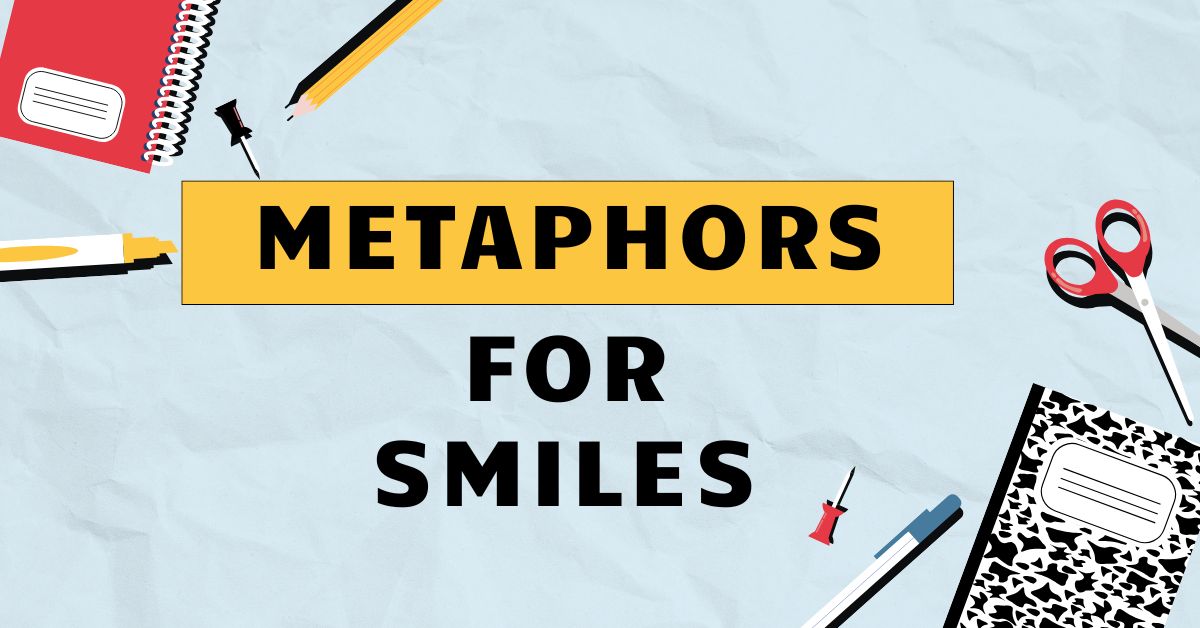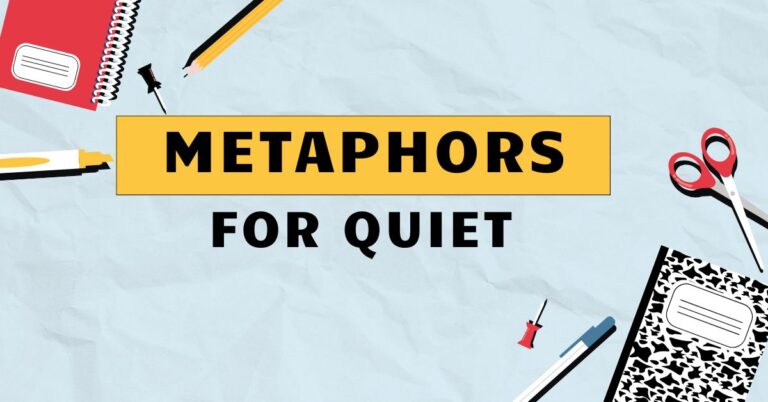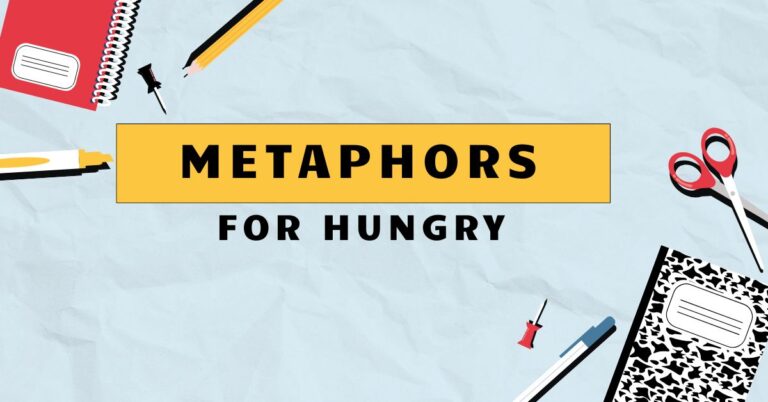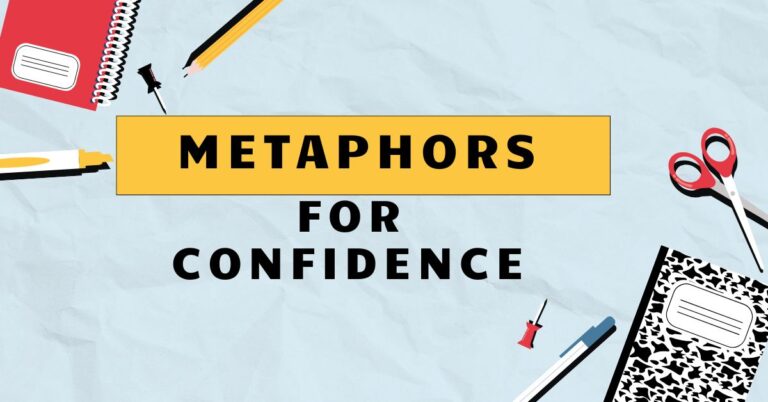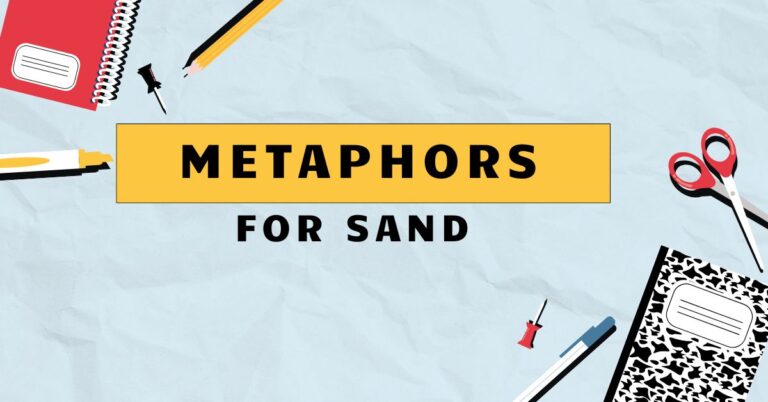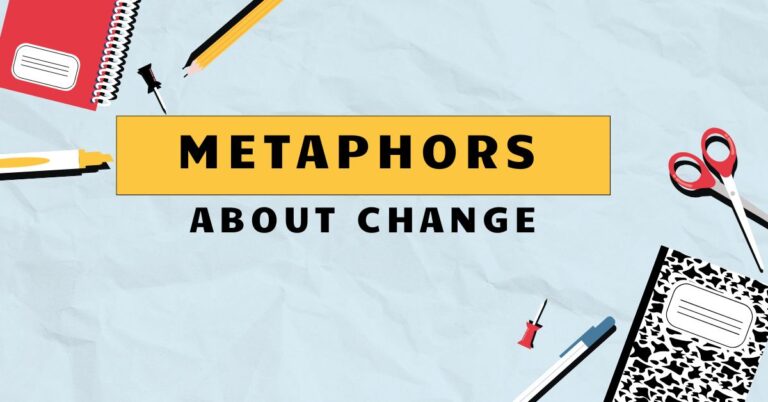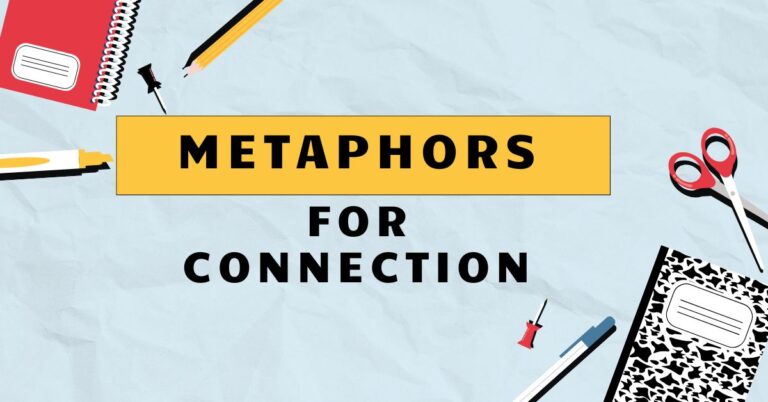31 Metaphors for Smiles: A Comprehensive Guide
Smiles, a universal language, often transcend literal descriptions. Metaphors allow us to delve deeper, capturing the essence of a smile’s impact and character.
Understanding metaphors for smiles enhances our ability to appreciate and articulate the nuances of human expression. This article benefits anyone seeking to enrich their writing, improve their comprehension of figurative language, or simply gain a deeper understanding of the emotional power of a smile.
It’s invaluable for students, writers, and anyone interested in the art of communication.
Table of Contents
- Definition of Metaphor and Its Application to Smiles
- Structural Breakdown of Smile Metaphors
- Types of Smile Metaphors
- Examples of Metaphors for Smiles
- Usage Rules for Metaphors for Smiles
- Common Mistakes When Using Smile Metaphors
- Practice Exercises
- Advanced Topics in Smile Metaphors
- Frequently Asked Questions
- Conclusion
Definition of Metaphor and Its Application to Smiles
Ametaphoris a figure of speech that directly compares two unrelated things, asserting that oneisthe other, to imply a shared quality. Unlike similes, which use “like” or “as” to make a comparison, metaphors make a direct connection.
This comparison isn’t literal but rather suggestive, inviting the reader to understand the subject (in this case, a smile) in a new light.
When applied to smiles, metaphors go beyond simple descriptions of teeth and upturned lips. They aim to capture the essence, the emotional impact, and the unique characteristics of a particular smile.
The function of a smile metaphor is to evoke a feeling, paint a vivid picture, and convey a deeper understanding of the smiler’s state of mind or the effect of their smile on others. For example, saying a smile is “a ray of sunshine” doesn’t mean it literally emits light; it means the smile is warm, bright, and uplifting, just like sunshine.
The context in which a smile metaphor is used is crucial. A metaphor that works in a romantic poem might be completely inappropriate in a scientific report.
The choice of metaphor depends on the tone, the audience, and the specific qualities of the smile the writer wants to emphasize. Understanding the nuances of metaphor allows for more precise and impactful communication.
Structural Breakdown of Smile Metaphors
The basic structure of a smile metaphor involves two key elements: thetenorand thevehicle. The tenor is the subject being described (the smile), and the vehicle is the object or concept used to describe it.
The connection between the tenor and vehicle is the implied similarity, the shared quality that the metaphor highlights.
For example, in the metaphor “Her smile was a beacon in the darkness,” the tenor is “her smile,” and the vehicle is “a beacon.” The implied similarity is the ability to provide light, hope, or guidance in a difficult situation. The effectiveness of the metaphor depends on how well the reader understands the qualities of a beacon and how those qualities can be applied to the smile.
The power of a metaphor also lies in its ability to create a sense of surprise or novelty. By connecting seemingly unrelated things, metaphors can force the reader to think differently about the subject.
A well-crafted smile metaphor can be both beautiful and insightful, revealing hidden depths and complexities.
Consider the sentence, “His smile was a fragile truce.” Here, the tenor is “his smile,” and the vehicle is “a fragile truce.” The shared quality isn’t visual; instead, it’s the idea of something delicate and easily broken, suggesting the smile is hesitant or masking underlying tension. This demonstrates how metaphors can convey emotional states far beyond a simple physical description.
Types of Smile Metaphors
Smile metaphors can be categorized based on the type of vehicle used to describe the smile. These categories help in understanding the range of possibilities and in crafting more effective and evocative descriptions.
Light-Related Metaphors
Light-related metaphors are among the most common and effective for describing smiles. They draw on the positive associations of light, such as warmth, brightness, and clarity.
These metaphors often suggest happiness, hope, and optimism.
Examples include phrases like “a ray of sunshine,” “a beacon in the darkness,” “a flash of brilliance,” and “a sparkling glow.” These metaphors emphasize the illuminating and uplifting qualities of a smile.
Nature-Related Metaphors
Nature provides a rich source of imagery for describing smiles. These metaphors often evoke feelings of natural beauty, peace, and growth.
They can also suggest a sense of authenticity and genuineness.
Examples include phrases like “a blooming flower,” “a gentle breeze,” “a warm spring,” and “a calm sea.” These metaphors highlight the organic and refreshing qualities of a smile.
Object-Related Metaphors
Object-related metaphors use inanimate objects to describe smiles. The objects chosen often have specific connotations, such as strength, resilience, or preciousness.
Examples include phrases like “a hidden gem,” “a steel wall,” “a comforting blanket,” and “a perfect arch.” These metaphors emphasize the tangible or structural qualities of a smile.
Animal-Related Metaphors
Animal-related metaphors can add a layer of personality and character to the description of a smile. The choice of animal can suggest qualities such as playfulness, cunning, or serenity.
Examples include phrases like “a Cheshire cat grin,” “a playful dolphin’s leap,” “a shy kitten’s peek,” and “a lion’s proud smirk.” These metaphors highlight the expressive and animated qualities of a smile.
Abstract Concept-Related Metaphors
Abstract concept-related metaphors use intangible ideas to describe smiles. These metaphors often convey deeper emotional or psychological meanings.
Examples include phrases like “a fragile truce,” “a silent promise,” “a warm invitation,” and “a secret language.” These metaphors emphasize the symbolic and communicative power of a smile.
Examples of Metaphors for Smiles
To further illustrate the use of metaphors for smiles, here are several examples categorized by type.
Light-Related Smile Metaphors
Light-related metaphors often evoke feelings of warmth and positivity. They suggest that the smile has an illuminating and uplifting effect.
| Metaphor | Explanation |
|---|---|
| Her smile was a ray of sunshine. | The smile is bright, warm, and brings happiness. |
| His smile was a beacon in the darkness. | The smile provides hope and guidance in a difficult situation. |
| Her smile was a flash of brilliance. | The smile is sudden, striking, and intelligent. |
| His smile was a sparkling glow. | The smile is radiant, lively, and attractive. |
| Her smile was a warm glow. | The smile provided comfort and reassurance. |
| His smile was a sunbeam on a cloudy day. | The smile brightened an otherwise gloomy atmosphere. |
| Her smile was a light in the window. | The smile signaled welcome and safety. |
| His smile was a flicker of hope. | The smile offered a small but significant amount of optimism. |
| Her smile was a burst of light. | The smile was sudden, intense, and joyful. |
| His smile was a luminous dawn. | The smile marked a new beginning or a fresh perspective. |
| Her smile was a soft candlelight. | The smile was gentle, intimate, and comforting. |
| His smile was a dazzling spotlight. | The smile was captivating and drew attention. |
| Her smile was a shimmering gleam. | The smile was subtle but attractive and lively. |
| His smile was a soft luminescence. | The smile had a gentle glow that was calming. |
| Her smile was as bright as day. | The smile was radiant and filled the room with joy. |
| His smile was a radiant beam. | The smile shone brightly, creating a positive atmosphere. |
| Her smile was illuminating. | The smile brought clarity and understanding to the situation. |
| His smile was a warm ember. | The smile had a gentle, comforting warmth. |
| Her smile was a twinkling star. | The smile was small but significant and beautiful. |
| His smile was a sunlit path. | The smile offered guidance and hope. |
| Her smile was a golden shimmer. | The smile had a luxurious and attractive quality. |
| His smile was a ray of hope. | The smile offered optimism during a difficult time. |
| Her smile was a bright spark. | The smile was energetic and full of life. |
| His smile was a sun-kissed glow. | The smile had a natural and healthy radiance. |
| Her smile was a luminous halo. | The smile had a heavenly and serene quality. |
Nature-Related Smile Metaphors
Nature metaphors evoke feelings of organic beauty and tranquility. They often suggest the smile is authentic and refreshing.
| Metaphor | Explanation |
|---|---|
| Her smile was a blooming flower. | The smile is beautiful, fresh, and full of life. |
| His smile was a gentle breeze. | The smile is calming, refreshing, and subtle. |
| Her smile was a warm spring. | The smile brings new life, hope, and renewal. |
| His smile was a calm sea. | The smile is peaceful, serene, and reassuring. |
| Her smile was a budding rose. | The smile was just beginning to blossom, showing potential for more beauty. |
| His smile was a mountain sunrise. | The smile was majestic and brought a sense of awe and new beginnings. |
| Her smile was a whispering willow. | The smile was gentle, soothing, and comforting. |
| His smile was a forest clearing. | The smile offered a sense of peace and openness in a complex situation. |
| Her smile was a babbling brook. | The smile was light, cheerful, and carefree. |
| His smile was a summer meadow. | The smile was expansive, warm, and inviting. |
| Her smile was a desert bloom. | The smile was rare, precious, and resilient. |
| His smile was an autumn sunset. | The smile was beautiful but tinged with a hint of melancholy. |
| Her smile was a gentle rain. | The smile was refreshing, cleansing, and restorative. |
| His smile was a field of wildflowers. | The smile was diverse, colorful, and naturally beautiful. |
| Her smile was a tranquil lake. | The smile was calm, deep, and reflective. |
| His smile was a vibrant rainbow. | The smile was colorful, hopeful, and followed a storm. |
| Her smile was a lush garden. | The smile was full of life, beauty, and nurturing qualities. |
| His smile was a snow-capped peak. | The smile was strong, enduring, and breathtaking. |
| Her smile was a green valley. | The smile was fertile, welcoming, and life-giving. |
| His smile was a starry night. | The smile was vast, mysterious, and filled with wonder. |
| Her smile was a refreshing spring. | The smile was rejuvenating and brought new energy. |
| His smile was a serene forest. | The smile was peaceful, quiet, and provided solace. |
| Her smile was a wild orchid. | The smile was exotic, beautiful, and rare. |
| His smile was a rugged coastline. | The smile was strong, resilient, and full of character. |
| Her smile was a rolling hill. | The smile was gentle, inviting, and comforting. |
Object-Related Smile Metaphors
Object metaphors often emphasize the tangible or structural qualities of a smile. They can also suggest specific attributes associated with the object.
| Metaphor | Explanation |
|---|---|
| Her smile was a hidden gem. | The smile is precious, rare, and waiting to be discovered. |
| His smile was a steel wall. | The smile is strong, impenetrable, and hides emotions. |
| Her smile was a comforting blanket. | The smile provides warmth, security, and reassurance. |
| His smile was a perfect arch. | The smile is symmetrical, balanced, and aesthetically pleasing. |
| Her smile was a golden key. | The smile had the power to unlock secrets or open doors. |
| His smile was a sturdy bridge. | The smile connected people and created understanding. |
| Her smile was a silver lining. | The smile brought hope during a difficult situation. |
| His smile was a secret code. | The smile conveyed a message only understood by a select few. |
| Her smile was a delicate porcelain. | The smile was beautiful but fragile and easily broken. |
| His smile was a sharp blade. | The smile could be cutting or used to defend. |
| Her smile was a warm hearth. | The smile provided warmth, comfort, and a sense of home. |
| His smile was a solid anchor. | The smile provided stability and security. |
| Her smile was a vibrant tapestry. | The smile was rich, complex, and full of life. |
| His smile was a well-oiled machine. | The smile was smooth, efficient, and reliable. |
| Her smile was a fragile vase. | The smile was beautiful but delicate and easily damaged. |
| His smile was a protective shield. | The smile guarded against vulnerability and pain. |
| Her smile was a shining mirror. | The smile reflected joy and positivity back at the observer. |
| His smile was a ticking clock. | The smile was fleeting and reminded of the passage of time. |
| Her smile was a gentle compass. | The smile guided and provided direction. |
| His smile was a sturdy ladder. | The smile helped others climb towards success. |
| Her smile was a precious pearl. | The smile was rare, beautiful, and highly valued. |
| His smile was a strong dam. | The smile held back emotions and prevented them from overflowing. |
| Her smile was a colorful mosaic. | The smile was composed of many different aspects, each contributing to the whole. |
| His smile was a polished lens. | The smile brought clarity and focus to a situation. |
| Her smile was a comforting quilt. | The smile provided warmth, security, and a sense of being cared for. |
Animal-Related Smile Metaphors
Animal metaphors bring personality and character to a smile, suggesting specific traits associated with the animal.
| Metaphor | Explanation |
|---|---|
| Her smile was a Cheshire cat grin. | The smile is wide, mischievous, and enigmatic. |
| His smile was a playful dolphin’s leap. | The smile is joyful, energetic, and spontaneous. |
| Her smile was a shy kitten’s peek. | The smile is hesitant, innocent, and endearing. |
| His smile was a lion’s proud smirk. | The smile is confident, powerful, and slightly arrogant. |
| Her smile was a gentle lamb’s bleat. | The smile was innocent and harmless. |
| His smile was a sly fox’s grin. | The smile was cunning and mischievous. |
| Her smile was a soaring eagle’s glance. | The smile was confident and commanding. |
| His smile was a wise owl’s blink. | The smile was knowing and insightful. |
| Her smile was a cheerful puppy’s wag. | The smile was joyful and enthusiastic. |
| His smile was a calm turtle’s nod. | The smile was peaceful and reassuring. |
| Her smile was a graceful swan’s glide. | The smile was elegant and effortless. |
| His smile was a playful monkey’s tease. | The smile was mischievous and teasing. |
| Her smile was a curious cat’s stare. | The smile was inquisitive and engaging. |
| His smile was a proud peacock’s display. | The smile was showy and self-assured. |
| Her smile was a gentle dove’s coo. | The smile was peaceful and comforting. |
| His smile was a sly snake’s curve. | The smile was deceptive and cunning. |
| Her smile was a playful otter’s splash. | The smile was joyful and full of energy. |
| His smile was a strong bear’s grin. | The smile was powerful and reassuring. |
| Her smile was a delicate butterfly’s flutter. | The smile was light, graceful, and fleeting. |
| His smile was a vigilant hawk’s gaze. | The smile was alert and perceptive. |
| Her smile was a quiet mouse’s squeak. | The smile was timid and barely noticeable. |
| His smile was a brave lion’s roar. | The smile was courageous and commanding. |
| Her smile was a swift swallow’s swoop. | The smile was quick and exhilarating. |
| His smile was a steady horse’s trot. | The smile was reliable and consistent. |
| Her smile was a gentle deer’s glance. | The smile was innocent and graceful. |
Abstract Concept-Related Smile Metaphors
Abstract metaphors convey deeper emotional or psychological meanings associated with the smile.
| Metaphor | Explanation |
|---|---|
| Her smile was a fragile truce. | The smile is delicate and could easily break down. |
| His smile was a silent promise. | The smile conveys a commitment without words. |
| Her smile was a warm invitation. | The smile is welcoming and encouraging. |
| His smile was a secret language. | The smile communicates a hidden message. |
| Her smile was a gentle forgiveness. | The smile offered pardon and understanding. |
| His smile was a hopeful beginning. | The smile signified a fresh start and optimism. |
| Her smile was a shared understanding. | The smile indicated mutual agreement and empathy. |
| His smile was a quiet strength. | The smile conveyed resilience and inner power. |
| Her smile was a joyful reunion. | The smile celebrated connection and togetherness. |
| His smile was a peaceful resolution. | The smile signified the end of conflict and a return to harmony. |
| Her smile was a tender memory. | The smile evoked cherished and sentimental feelings. |
| His smile was a silent encouragement. | The smile offered support without the need for words. |
| Her smile was a shared dream. | The smile represented a common aspiration and hope. |
| His smile was a quiet acceptance. | The smile indicated understanding and resignation. |
| Her smile was a gentle compassion. | The smile conveyed empathy and caring. |
| His smile was a hopeful expectation. | The smile expressed anticipation and optimism for the future. |
| Her smile was a joyful celebration. | The smile commemorated success and happiness. |
| His smile was a peaceful surrender. | The smile indicated acceptance and letting go. |
| Her smile was a tender longing. | The smile expressed a deep desire and affection. |
| His smile was a silent gratitude. | The smile conveyed appreciation without words. |
| Her smile was a shared adventure. | The smile represented excitement and discovery together. |
| His smile was a quiet determination. | The smile showed resolve and commitment. |
| Her smile was a gentle reassurance. | The smile provided comfort and confidence. |
| His smile was a hopeful anticipation. | The smile conveyed eagerness and excitement. |
| Her smile was a joyful discovery. | The smile celebrated new knowledge and understanding. |
Usage Rules for Metaphors for Smiles
Using metaphors effectively requires attention to several key rules. These rules ensure that the metaphor is clear, appropriate, and impactful.
- Clarity: The metaphor should be easily understood. The connection between the smile and the vehicle should be apparent. Avoid obscure or overly complex metaphors.
- Relevance: The metaphor should be relevant to the context. Consider the tone, the audience, and the overall message.
- Originality: While some common metaphors are effective, strive for originality. A fresh and unexpected metaphor can have a greater impact.
- Consistency: Avoid mixing metaphors. If you start with a light-related metaphor, stick with that theme.
- Appropriateness: Ensure the metaphor is appropriate for the situation. A somber occasion calls for different metaphors than a joyful one.
It’s also important to consider theconnotationsof the vehicle. Each object or concept carries associated meanings and emotions.
Choose vehicles whose connotations align with the desired effect.
For example, using “a fragile truce” implies the smile is hesitant or masking underlying tension, while “a warm invitation” suggests openness and welcoming.
Common Mistakes When Using Smile Metaphors
Several common mistakes can weaken the impact of smile metaphors. Being aware of these pitfalls can help you craft more effective and compelling descriptions.
- Clichés: Avoid overused metaphors like “a million-dollar smile.” These lack originality and impact.
- Mixed Metaphors: Combining unrelated metaphors creates confusion. For example, “Her smile was a ray of sunshine that built bridges.”
- Inappropriate Tone: Using a lighthearted metaphor in a serious context can be jarring.
- Lack of Clarity: If the connection between the smile and the vehicle is unclear, the metaphor will fail to resonate.
- Overuse: Using too many metaphors in a short space can make your writing feel forced and unnatural.
Correct vs. Incorrect Examples:
| Incorrect | Correct | Explanation |
|---|---|---|
| Her smile was a million-dollar smile that launched a thousand ships. | Her smile was a warm invitation. | Avoid clichés and mixed metaphors. |
| His smile was a rusty cog in the machine of life. | His smile was a steel wall. | Ensure the metaphor is relevant and understandable. |
| Her smile was a freight train of joy. | Her smile was a gentle breeze. | Consider the tone and appropriateness of the metaphor. |
Practice Exercises
Test your understanding of metaphors for smiles with these exercises. Identify the type of metaphor and explain its meaning.
Exercise 1: Identify the Type of Metaphor
| Sentence | Type of Metaphor | Explanation |
|---|---|---|
| Her smile was a beacon in the darkness. | Light-Related | The smile provides hope and guidance. |
| His smile was a gentle breeze. | Nature-Related | The smile is calming and refreshing. |
| Her smile was a hidden gem. | Object-Related | The smile is precious and rare. |
| His smile was a Cheshire cat grin. | Animal-Related | The smile is mischievous and enigmatic. |
| Her smile was a fragile truce. | Abstract Concept-Related | The smile is delicate and hesitant. |
| His smile was a sunbeam on a cloudy day. | Light-Related | The smile brightened a gloomy atmosphere. |
| Her smile was a blooming flower. | Nature-Related | The smile is beautiful and full of life. |
| His smile was a sturdy bridge. | Object-Related | The smile connected people and created understanding. |
| Her smile was a playful dolphin’s leap. | Animal-Related | The smile is joyful and energetic. |
| His smile was a warm invitation. | Abstract Concept-Related | The smile is welcoming and encouraging. |
Exercise 2: Create Your Own Metaphors
Complete the following sentences with an appropriate metaphor for a smile.
| Sentence | Your Metaphor |
|---|---|
| Her smile was like… | A warm fire on a cold night. |
| His smile was as comforting as… | A familiar melody. |
| Her smile shone like… | A newly minted coin. |
| His smile was as unexpected as… | A rainbow after a storm. |
| Her smile was the equivalent of… | A gentle hug. |
| His weary smile was a little like… | A flickering candle in the wind. |
| Her triumphant smile resembled… | A flag waving in victory. |
| His mischievous smile was akin to… | A playful wink. |
| Her secretive smile was reminiscent of… | A closed book. |
| His genuine smile was as refreshing as… | A cool glass of water on a hot day. |
Advanced Topics in Smile Metaphors
For advanced learners, exploring the use ofextended metaphorsandmixed metaphorscan provide a deeper understanding of figurative language. An extended metaphor is a metaphor that is developed over several lines or paragraphs, creating a more complex and nuanced comparison.
While mixed metaphors are generally avoided, they can be used deliberately for comedic or ironic effect.
Additionally, analyzing the use of smile metaphors in literature and poetry can provide valuable insights into how skilled writers use language to create vivid and memorable images. Consider how different authors use metaphors to convey different aspects of a character’s personality or emotional state.
Studying the work of masters can inspire you to craft more effective and imaginative metaphors in your own writing.
Another advanced topic is the cultural variation in the interpretation of metaphors. Different cultures may have different associations with certain objects or concepts, which can affect how a metaphor is understood.
Being aware of these cultural differences is crucial for effective communication in a global context. For example, colors can have different symbolic meanings in different cultures, so a metaphor involving color might be interpreted differently depending on the audience.
Frequently Asked Questions
- What is the difference between a metaphor and a simile?
- Why are metaphors useful in writing?
- How can I avoid using clichés in my metaphors?
- What should I do if my metaphor is unclear?
- How important is the context when using metaphors?
- Can I use more than one metaphor in a sentence?
- How do I choose the right vehicle for my metaphor?
- Are
different types of smiles best described with different metaphors?
- How can understanding cultural differences affect my use of metaphors?
- Is it ever appropriate to use a negative metaphor for a smile?
A metaphor directly compares two things by stating that oneisthe other, while a simile uses “like” or “as” to make a comparison. For example, “Her smile was sunshine” (metaphor) vs.
“Her smile was like sunshine” (simile).
Metaphors add depth, imagery, and emotional resonance to writing. They help readers understand complex ideas in a more engaging and memorable way.
Strive for originality by thinking creatively and looking for unexpected connections. Avoid overused phrases and try to come up with fresh and unique comparisons.
Revise the metaphor to make the connection between the tenor and the vehicle more explicit. Consider providing additional context or explanation.
Context is crucial. The metaphor should be appropriate for the tone, audience, and overall message of the writing.
A metaphor that works in one situation may be inappropriate in another.
While possible, it’s generally best to avoid using too many metaphors in a short space. Overuse can make your writing feel forced and unnatural.
Focus on crafting one or two strong metaphors that effectively convey your message.
Consider the qualities you want to emphasize about the smile. Choose a vehicle whose connotations align with the desired effect.
Think about what associations the reader will have with the vehicle and how those associations will shape their understanding of the smile.
Yes, absolutely. A joyful, beaming smile might be well-described with light-related metaphors, while a secretive, subtle smile might be better suited to abstract concept-related or animal-related metaphors.
Being aware of cultural differences is essential because certain images or concepts may have different associations in different cultures. What resonates positively in one culture could be confusing or even offensive in another.
Research your audience and be sensitive to these nuances.
Yes, but sparingly and with careful consideration. A negative metaphor can be effective in conveying complex emotions such as sadness, resignation, or hidden pain.
However, ensure that it aligns with the overall tone and purpose of your writing and doesn’t come across as insensitive or gratuitous.
Conclusion
Metaphors offer a powerful tool for describing smiles, adding depth, imagery, and emotional resonance to your writing. By understanding the structure, types, and usage rules of smile metaphors, you can craft more effective and compelling descriptions that capture the essence of this universal expression.
Whether you’re a student, writer, or simply someone who appreciates the art of communication, mastering the use of metaphors for smiles will enrich your understanding and appreciation of the human experience. So go forth and illuminate the world, one well-crafted metaphor at a time!

